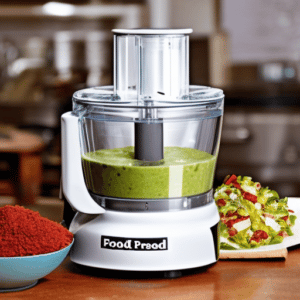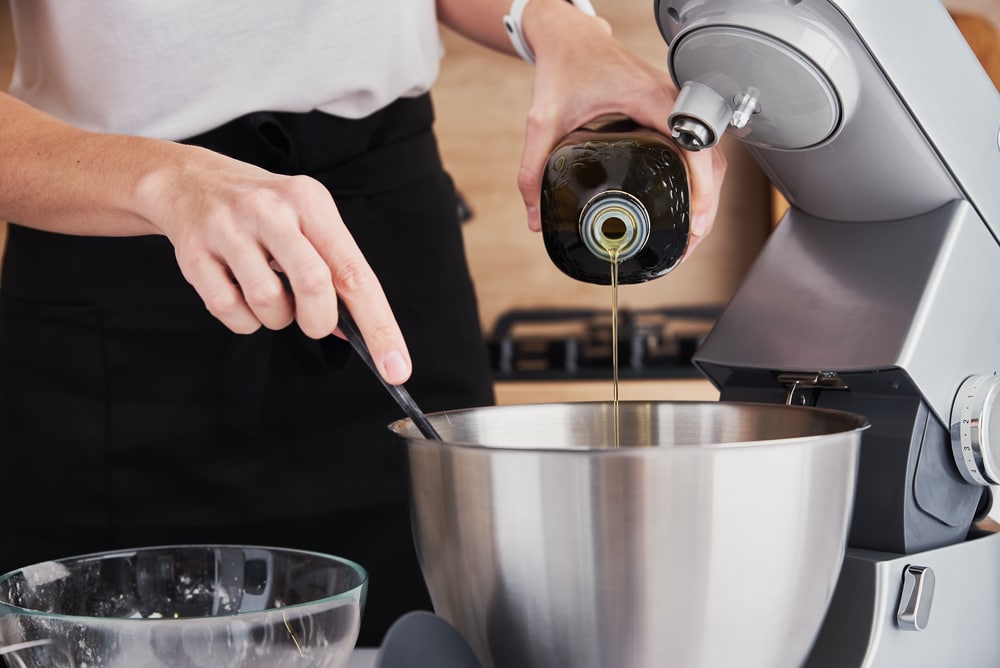Using a food processor rapidly expands what you can do with your favourite recipes and your time in the kitchen. You can use a food processor to create everything from nut butter and olive oil to healthy ice cream and breadcrumbs for your fried chicken. Of course, before you can truly discover all the benefits of a food processor, you need to learn how to use one.
Food processors are versatile products capable of mixing, chopping, pureeing, and slicing your food into a range of different dishes. A variety of different attachments and designs can make these products seem a little complex at first – but using food processors isn’t as difficult as it seems.
Today, we’re going to walk you through the basic steps of how to use a food processor to produce a wonderful array of new recipes.
Getting Started: Food Processor Setup
The first step in using a food processor successfully is reading the manual that comes with it. Some devices will have specific instructions you’ll need to follow to ensure that your machine works properly. At the very least, you should use the manual to get familiar with all the different parts of your food processor, from the slicing disc to the dough blade and food pusher system.
Following the manufacturer’s instructions, assemble your food processor one piece at a time. You might want to wash the bowl and the accessories with warm soapy water first to make sure any residue from the packaging process is removed.
Start by placing the base of your food processor on your kitchen counter. This is the heaviest part of most food processors, and it comes with the motor component. You can plug the device in after removing all plastic and packaging, but don’t turn it on until you’re ready to use your processor.
Make sure the base of your food processor is on a flat, sturdy surface and that the plug is far away from any source of water that might cause an electrical reaction. Attach the work bowl to the food processor in its indicated slot. Work bowls can come in a range of sizes, so check out your instructions to see which one you’re going to need for your food processor recipes.
Choosing Blades for Your Food Processor
After you’ve clicked your work bowl into place, you can start to think about the blades you’re going to be using. Most food processors will come with a removable drive shaft adapter that your discs and blades can slide over. Place the adapter in the work bowl onto the built-in drive pin. This adapter will either click or lock into place in most cases.
Once your adapter is in place, look at the available blades that come with your food processor. Different food processors may have various accessories, from a grater attachment for the cheese to dough hooks for making dough. Some of your options include:
Shredder or Slicing Disc
A shredder or slicing disc is often used for slicing products like cheese, meats, and vegetables. You can install a slicing disc into your machine by sliding the drive adapter over the drive pin and setting the disc on top of the adapter.
S-Shaped Blade
The S blade is a multi-purpose blade that also fits over the drive pin in the centre of the food processor work base and bowl. In some models, you’ll need to press down to make sure the blade fits properly into place. Check the blade is steady before you add food to your food processor bowl.
Dough Blade
A dough blade is specifically designed to help you create all kinds of dough. If you want to take the work out of kneading dough, this is the attachment for you. Usually, this blade will attach in the same way as a multi-purpose blade.
Your food processors may have other attachments, such as a mini chopper to make salsa from vegetables or other chopping blades to help with creating more liquid products, like sauces and other ingredients if you don’t have a blender.
The Food Pusher and Bowl Cover
You’re almost ready to start experimenting with recipes to make your life easier now you have your food processor setup. Before you begin, however, you’ll need to attach the work bowl cover and the food pusher system, if applicable.
Although all food processors are different, most models come with a clear lid to secure your work bowl and stop food from going everywhere when you’re adding ingredients. The lid can also help to keep the smell from getting out if you are chopping garlic or making garlic bread. Make sure that the lid is secured firmly into place on your bowl, just like you would with the lid of a blender.
Some larger food processors also come with feed tubes for processing ingredients rapidly. The food pusher might lock into place with an audible click, so you don’t have to worry about veggies flying out of the bowl as you add ingredients to your recipe.
If your food processor attachments and all of the components feel secure, then you can grab your recipe and start preparing your ingredients.
Adding Ingredients to a Food Processor

Learning how to use a food processor can be a great experience.
A food processor is a wonderful way to chop veggies, knead the dough for bread, and even help you slice through ingredients for sauces. You can find tons of cooking recipe options online to get you started, and some will advise chopping some products before you add them to the processor, just in case. Large vegetables, for instance, may need a quick chop if you want to fit them through the food processor funnel.
When you’re adding your vegetables and other ingredients to your food processor, make sure you’re extremely careful. Keep your fingers away from any blades and use the pusher device to help move the foods down the chute if you need to. Once you’ve started experimenting with all kinds of bread dough, cheese, and vegetables, you’ll be blown away by what your food processor can do.
Don’t forget to experiment with things like the pulse button if you want to create chunkier salsas and soups. The pulse function is great for adding textures to your meal. Alternatively, you can use a higher setting if you’re making something like homemade hummus or sauce. For bread and pizza dough, or even pasta dough, make sure you follow the instructions in your recipe carefully. Try not to add too many ingredients at once, as this can overwhelm the machine.
If your food processor makes a strange noise when you’re adding ingredients to the feed tube, this could be a sign that you need to get your cutting board out and chop your ingredients a little smaller.
Maintaining your Food Processor
Once you know how to use a food processor, it’s important to learn how to look after it too. A step-by-step guide on how to care for your food processor should always include tips on how to clean and store your new device. After you use a food processor, clean the elements straight away to ensure that dough and other ingredients can’t stick to the components.
Remove any blades or attachments carefully, and rinse them with warm, soapy water. You can use a soft cloth to clean the outside of the processor if it gets dirty. A damp cloth is also excellent for cleaning the lid and funnel cover for the processor. If your ingredients are stuck onto the side of the food processor bowl or attachments, leave them for a few seconds in some extra hot water before scrubbing. You may need to repeat the process a few times to remove sticky substances.
After cleaning your food processor, leave it to air dry on the top rack of your dish rack, and carefully put the machine away when it’s not in use. This will stop you from splashing or staining the processor when you chop and cook other foods around the kitchen.
Tips for Using Your Food Processor
Remember, a food processor is a kitchen utensil with a specific purpose. Food processors are generally best for dry ingredients, while blenders are better suited to wet ingredients.
When cooking with the help of your food processor, it also helps to:
- Listen to the motor: Don’t leave the motor to run too long, or it could overheat. Make sure you listen out for any signs the motor is struggling.
- Use the pulse option: Pulse buttons are excellent for experimenting with texture in your food processor. You can even use them to create a puree.
- Cut ingredients: Prepping ingredients by cutting them up before adding them to the food processor can help the blades last longer.
- Stay safe: Keep hands, fingers, and kitchen utensils away from the food processor when the blades are spinning. Do not dip the electronic parts of your food processor in the sink to wash it – use a damp cloth instead.
- Turn the machine off before removing food: Make sure the machine is switched off before you remove the food from the blades or the bowl for cleaning purposes.
Get the Most Out of Your Food Processor
Now you know how to use a food processor safely, you’re ready to start exploring some new recipes. There is a whole host of things you can do with your food processor, so start experimenting, and soon you will be using it for everything!
What do you use your food processor for?

